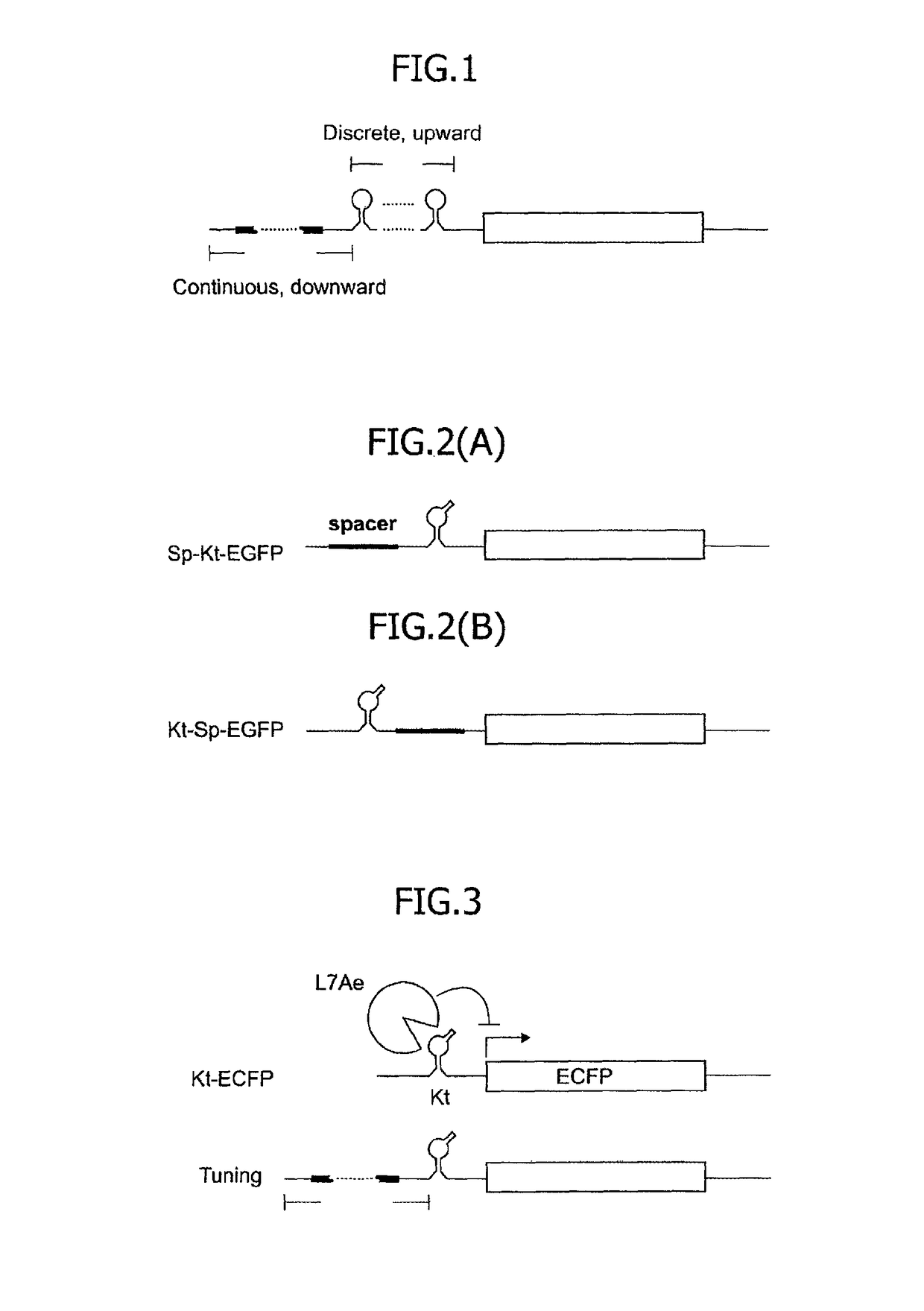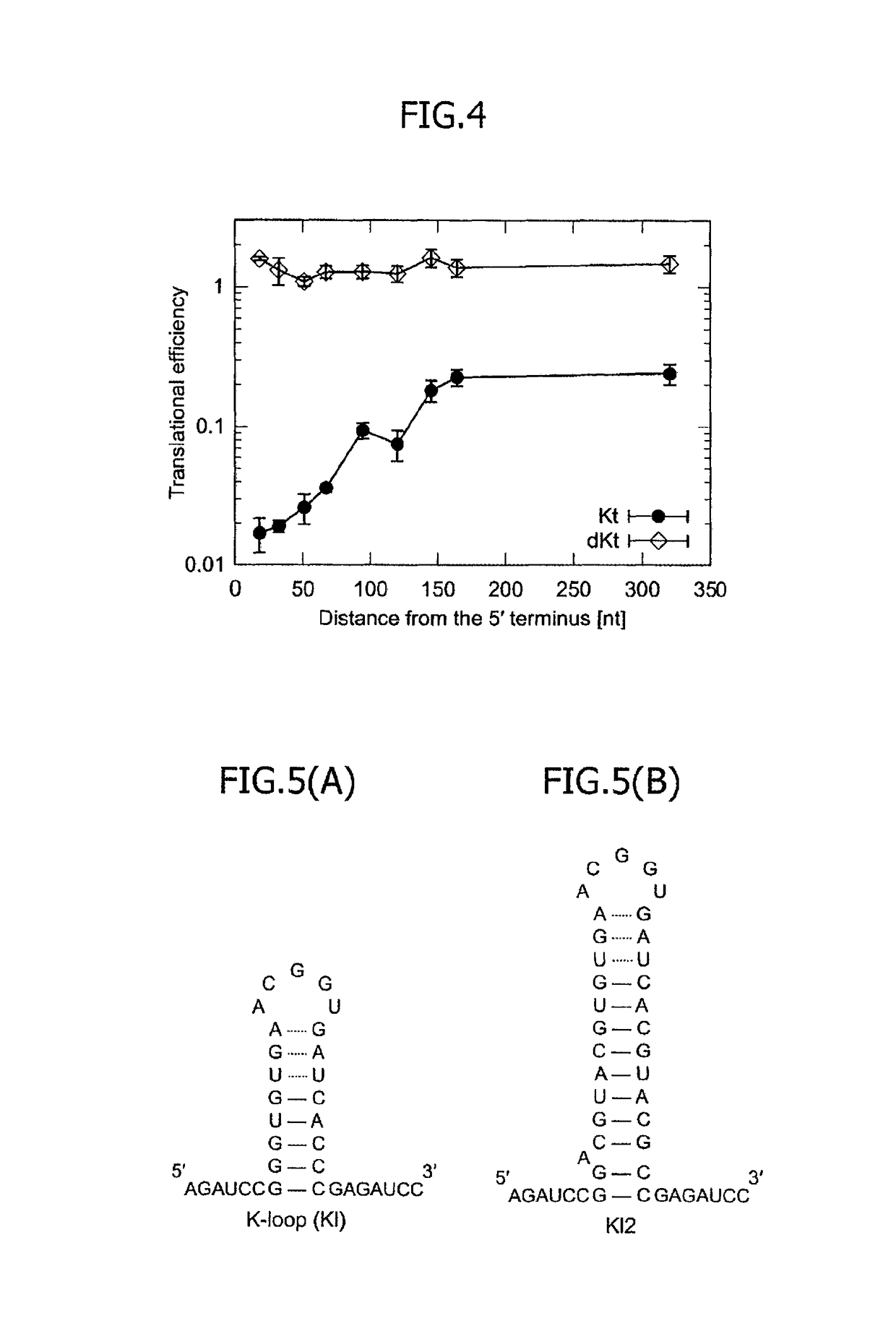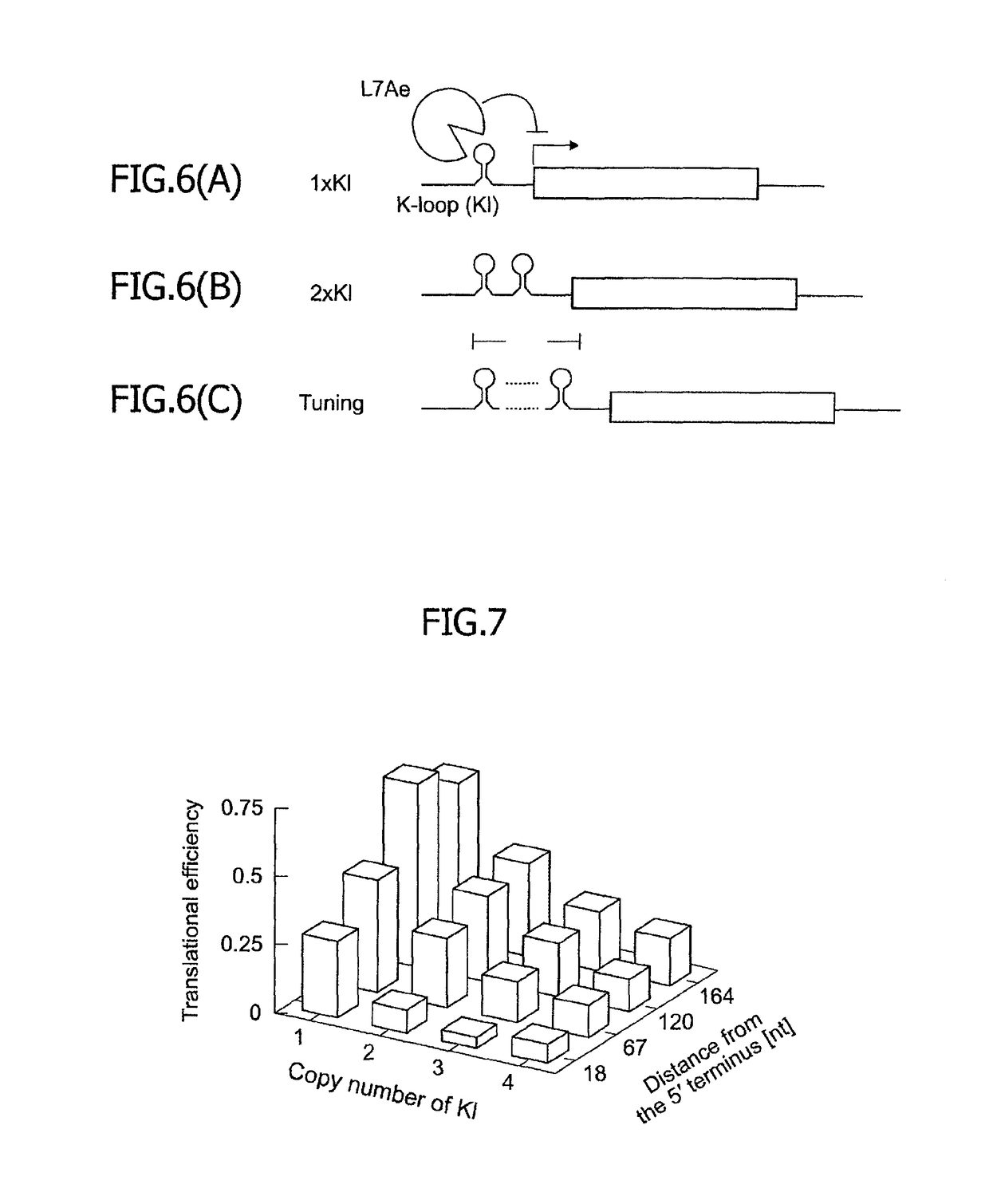Translational control system using RNA-protein interaction motif
a technology of rnaprotein and interaction motif, applied in the direction of recombinant dna-technology, sugar derivatives, organic chemistry, etc., can solve the problem of restricted quantitative translational regulation use, and achieve the effect of quantitative translational regulation
- Summary
- Abstract
- Description
- Claims
- Application Information
AI Technical Summary
Benefits of technology
Problems solved by technology
Method used
Image
Examples
example 1
[Measurement of Translational Efficiency of Sp-Kt-EGFP, Kt-Sp-EGFP and Kt-EGFP]
[0090]Three mRNAs encoding the gene of EGFP were designed by providing, in the 5′UTR, a kink-turn RNA motif, that is, a binding RNA motif of an archaeal ribosomal protein, L7Ae protein. The kink-turn RNA motif is hereinafter referred to as the Kt motif FIGS. 2(A) and 2(B) illustrate the outline of the design. FIG. 2(A) shows a structure, in the 5′UTR of the mRNA, containing a cap structure, a spacer and the Kt motif arranged from the 5′ terminus, which structure is herein referred to as Sp-Kt-EGFP. FIG. 2(B) shows a structure, in the 5′UTR of the mRNA, containing a cap structure, the Kt motif and a spacer arranged from the 5′ terminus, which structure is herein referred to as Kt-Sp-EGFP. Although not shown in the drawing, an mRNA containing, in the 5′UTR, a cap structure and the Kt motif arranged without providing a spacer was also designed. This structure is referred to as Kt-EGFP. The detailed sequences...
example 2
[Preparation of mRNAs with Position of Kt Motif from 5′ Terminus Altered]
[0092]Next, mRNAs were designed by providing spacers so as to have the 5′ terminal bases of Kt motifs positioned in the 18th, 51th, 67th, 94th, 120th, 145th and 320th bases from the 5′ terminus. The number of Kt motifs for each mRNA was one. The nucleotide sequences of the 5′UTRs of the respective mRNAs are shown in Table 5 below as constructs 18nt-Kt, 51nt-Kt, 67nt-Kt, 94nt-Kt, 120nt-Kt, 145nt-Kt and 320nt-Kt. Plasmids expressing these mRNAs were prepared, so as to examine the translational efficiencies. FIG. 3 illustrates the outline of the mRNA design. As a result, in the presence of the L7Ae protein working as the trigger protein specifically binding to the Kt motif, the translational efficiency was found to be higher as the number of bases of the spacer was greater, namely, as the distance of the Kt motif from the 5′ terminus was greater. Conversely, it was found that as the Kt motif is closer to the 5′ te...
example 3
[Two-Dimensional Approach]
[0097]It was found, as a result of Examples 1 and 2, that the translational repression attained by the Kt motif and the L7Ae is approximately 2% to approximately 20%. If the Kt motif is away from the 5′ terminus of the mRNA by 164 or more bases, further repression cannot be attained but the translational efficiency is approximately 20%. In this example, in order to expand the translational regulatable range, an mRNA into which a K-loop RNA motif was inserted instead of the Kt motif was used. FIG. 5(A) illustrates the structure of the K-loop RNA motif. The K-loop RNA motif is hereinafter referred to as the Kl motif. It is known that the Kl motif has binding affinity to the L7Ae approximately 500 times as weak as that of the Kt motif. Accordingly, the translational repression in the presence of L7Ae attained by the mRNA containing the Kl motif is weaker than the translational repression in the presence of L7Ae attained by the mRNA under the same conditions ex...
PUM
| Property | Measurement | Unit |
|---|---|---|
| dissociation constant Kd | aaaaa | aaaaa |
| dissociation constant Kd | aaaaa | aaaaa |
| distance | aaaaa | aaaaa |
Abstract
Description
Claims
Application Information
 Login to View More
Login to View More - R&D
- Intellectual Property
- Life Sciences
- Materials
- Tech Scout
- Unparalleled Data Quality
- Higher Quality Content
- 60% Fewer Hallucinations
Browse by: Latest US Patents, China's latest patents, Technical Efficacy Thesaurus, Application Domain, Technology Topic, Popular Technical Reports.
© 2025 PatSnap. All rights reserved.Legal|Privacy policy|Modern Slavery Act Transparency Statement|Sitemap|About US| Contact US: help@patsnap.com



